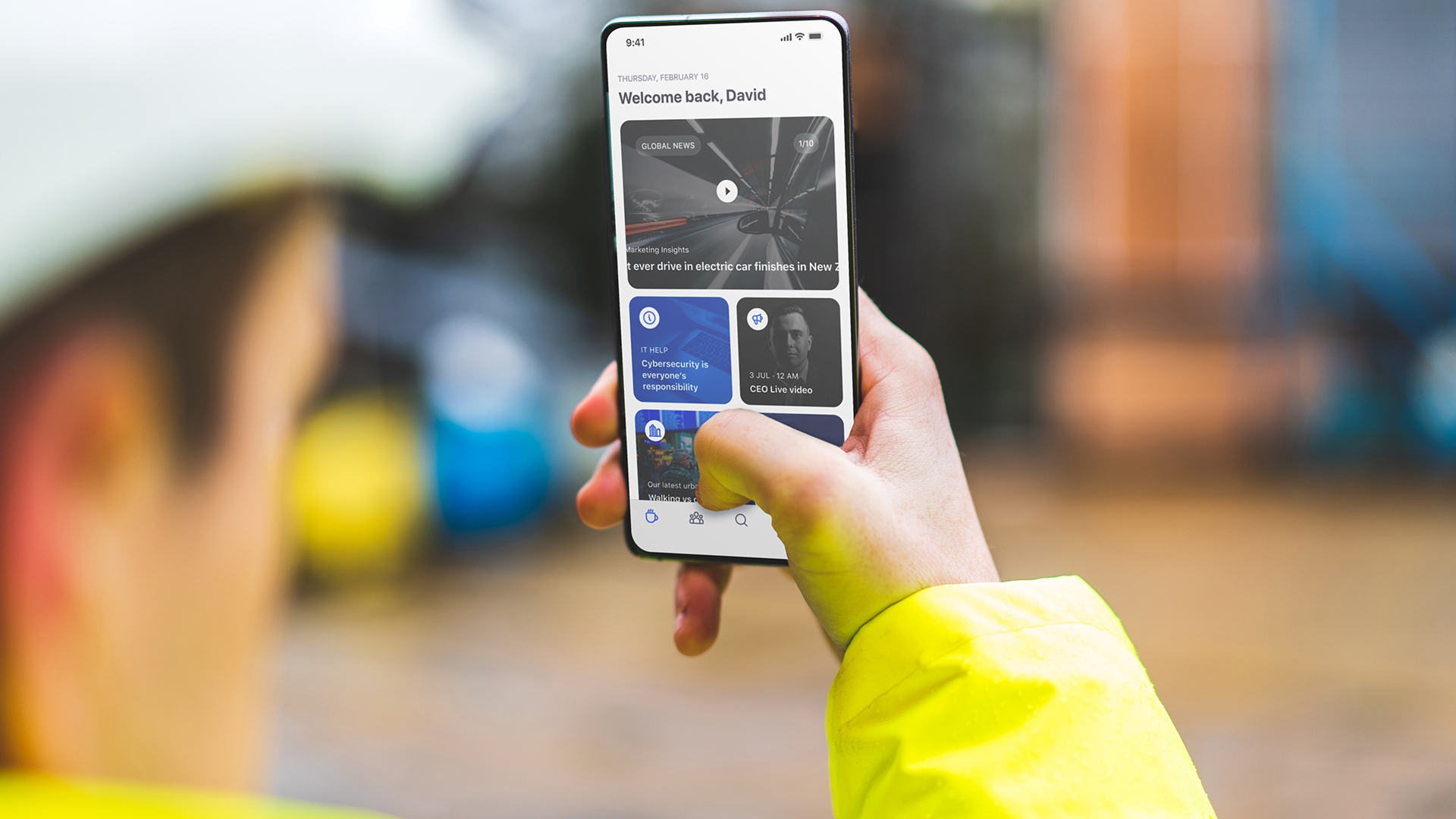The future is frontline: Why distributed workplaces need a mobile-first intranet
There are 2.7 billion frontline workers worldwide – that’s more than double the number of desk-based employees. And in the U.S., frontline workers make up a whopping 70% of the workforce. This makes accessible, mobile-friendly communication solutions not just a nice-to-have, but an absolute necessity in today’s increasingly distributed workplaces.
The June 2024 Gartner “Future of Frontline Work” report highlights the increasing pressure on organizations to address attrition and boost team performance among frontline employees. The report states that 86% of hourly employees say it’s essential for their organization to see them as people, not just as employees.
One fundamental way to achieve this is by providing easy access to information and tools via mobile devices.
Mobile-first means more than “responsive”
For years, organizations designed intranets with desktop users in mind, featuring lengthy articles, detailed reports, and static pages. The mobile-first approach, however, recognizes the unique needs of workers on the factory floor who don’t have the same experience as their colleagues working in the traditional office.
Frontline workers need quick, actionable information, which means content must be concise and easily scannable. Think TLDR (too long, didn’t read) environment meets busy, on-the-go employee with no permanent desk. Or, the “have it your way” philosophy finally meets frontline workers.
Mobile-first workplace communications deliver more than just a downsized version of the desktop platform. With an omni-channel approach, you can connect with frontline employees where they are through mobile alerts and digital signage. This functionality ensures that frontline employees are as informed and engaged as their in-office and remote colleagues.
Our latest Workplace experience trends & insights report found that employees are becoming less satisfied with their tech. Last year, only 29% of respondents were completely satisfied with their company’s workplace tools and technologies.
With that in mind, user experience (UX) is critical when considering mobile-first employee communications. Personalized features significantly enhance the UX by tailoring the content and notifications to the individual needs of each worker, improving their productivity and satisfaction.
This personalization also delivers benefits for specific vertical markets with many frontline employees. For example, a retail employee might receive real-time updates about inventory changes, while a manufacturing worker might get notifications about new safety protocols.
The majority of companies are prioritizing frontline employee experience
According to a Gartner frontline worker study, 58% of organizations employing frontline workers have invested in improving their employee experience, recognizing the direct link between engagement and productivity. Notably, one-third of the other organizations that haven’t already invested in this vital area plan to do so.
These improvements will significantly enhance the workplace experience for frontline workers, fostering a more positive and engaging work environment. The good news is that supporting frontline employees who need timely information and meaningful connections is more accessible than ever. Whether broadcasting critical messages or providing access to workplace tools, organizations can move the workplace experience forward to make it easy for frontline employees to stay safe and informed.
Boosting productivity. Anytime. Anywhere.
The shift towards mobile-first workplace communications isn’t a passing trend—it’s the future (and present) of work. As more organizations grasp the value of mobile-accessible employee communications, we expect continued innovation, including deeper integration with AI, to enhance the employee experience and drive productivity.
At Appspace, we provide solutions that meet the evolving needs of today’s workforce, recognizing many employees don’t work in traditional offices or the office at all. Keeping all types of workers in mind is the best way for organizations and their teams to stay connected and engaged.
If you’re ready to take the next step in improving your employee communication and engagement, we’re here to help.


